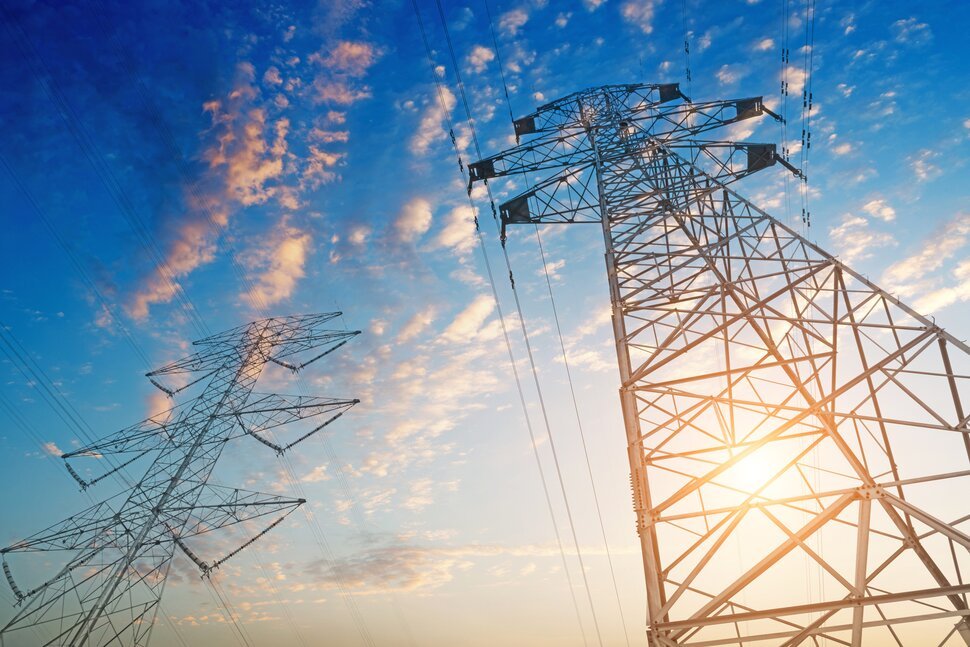
Getty Images
Having a smattering of utilities in your portfolio can serve as a kind of insurance if the economy takes a turn for the worse.
Utility stocks are considered safe-haven investments that may hold value better than other types of stocks during times of economic hardship.
That’s because people are going to need electricity, natural gas and water for their homes and businesses regardless of whether or not we’re in a recession.
As a safe haven, utility stocks compete with bonds, which are considered safer investments than stocks. As interest rates have risen, bonds have become more popular, helping to push the utilities sector of the S&P 500 down about 10% year to date while the broader market benchmark is up about 19%. In fact, utilities are the worst-performing sector so far this year.
Another reason why utilities don’t do so well when interest rates are rising is because these companies need to borrow money to build expensive infrastructure. Rising rates make it more expensive to borrow money.
So, why would you want to own utility stocks? Having a smattering of utilities in your portfolio can serve as a kind of insurance. If the economy takes a turn for the worse, utilities stocks might outperform.
With utilities stocks in a slump, Niladri Mukherjee, chief investment officer at TIAA Wealth Management, says valuations are “quite attractive” based on price-to-earnings multiples. He adds that these companies should start performing better as interest rates come down.
“Given the growing predictions of an economic slowdown – whether a soft landing or a recession – the Fed may be back in easing mode in the first half of 2024,” says Peter Earle, an economist at the American Institute for Economic Research. “If it is, declining borrowing costs may improve the prospects of utilities versus bonds.”
With the prospect of better performance on the horizon, here’s a look at seven utility stocks that pay dividends. The dividend information is based on annualized forward yields.
Todd Shaffer, senior manager of research at VectorVest, ranks this St. Louis-based utility among a list of companies he considers to be safe and undervalued, and that have been rising in price.
Ameren has 2.4 million electric customers and around 900,000 natural gas customers through its Missouri and Illinois subsidiaries.
In October, the company said it had been selected to lead the development of an $84 million transmission project in northwest Missouri.
Ameren is yielding 3.2%, which is roughly in line with the industry average of 3.8%.
“In low- or slow-growing economic conditions, utilities should continue to provide a safe haven that generates consistent income,” Shaffer says. “We still suggest you favor companies with a track record of solid fundamentals as the best assurance of relatively stable stock prices and safe dividends.”
One of those is NRG, he says. The company has 7.3 million customers and is targeting 7% to 9% dividend growth per year through 2027.
In addition to supplying electricity and natural gas, the company is also a home services provider with a smart-home technology platform.
NRG is currently yielding 3.2%.
This energy holding company is another of Shaffer’s picks. It provides electricity to around 800,000 homes in New Mexico and Texas.
The company is trying to merge with Avangrid Inc. (AGR), an energy services and delivery company. However, the deal has been held up by regulators in New Mexico. The companies are appealing to the New Mexico Supreme Court.
Even if the merger doesn’t go through, PNM has a bright future, as it works toward fully eliminating carbon from its generation portfolio by 2040.
PNM is yielding 3.6%.
This energy infrastructure company, another one of Shaffer’s picks, is also building energy transition infrastructure, such as electric transmission and distribution networks and utility-scale battery storage. It’s also studying the feasibility of hydrogen delivery.
Sempra has energy networks and investments in California, Texas and Mexico, and it is also involved in the export market for liquefied natural gas, or LNG.
LNG from the U.S. has become an important export for global energy markets, especially as European nations look for energy sources outside of Russia.
Sempra is yielding 3.3%.
Consolidated Water Co. Ltd. (CWCO)
“Utility stocks which, among their peers, have the highest free cash flow and the lowest debt levels alongside a consistent dividend yield are likely to be the most promising,” Earle says. “Utilities are capital-intensive and heavily regulated, so simply picking those with the highest yields overlooks critical details.”
Despite not having the highest dividend on this list, Shaffer likes this seawater desalination company for its favorable fundamentals and positive sales growth.
The company has a water utility that supplies drinking water to two of the three most populated areas on Grand Cayman Island. It has long-term contracts with government utilities there, in the Bahamas and in the British Virgin Islands, giving it exposure to the tourism industry in the Caribbean.
In addition to water-related products, the company also designs, constructs, sells, operates and manages water infrastructure.
CWCO is currently yielding 1%.
NextEra Energy Inc. (NEE)
This company, which says it is the largest utility company in the world, is at the forefront of the renewable energy transition.
Its regulated utility segment engages primarily in the generation, transmission, distribution and sale of electric energy in Florida. Another segment produces electricity from renewable sources, including wind and solar. The company is also involved with green hydrogen, battery storage and nuclear plants.
The company says it expects to grow its dividend by about 10% per year through at least 2024, from a 2022 base.
NextEra Energy is yielding 3.1%.
In June, Morningstar listed this company as one of the most undervalued utilities stocks, estimating its fair value at $65. At the time, it was trading at $58.30, and it since has slipped to $51.70 as of Dec. 7.
“We expect the dividend to grow in line with earnings for the foreseeable future,” Morningstar strategist Travis Miller wrote in June.
The utility has about 1.7 million customers and operates in Kansas and Missouri. Last year, the company invested $2.2 billion in electric infrastructure projects.
EVRG is yielding 5%.
Updated on Dec. 8, 2023: This story was previously published at an earlier date and has been updated with new information.
















